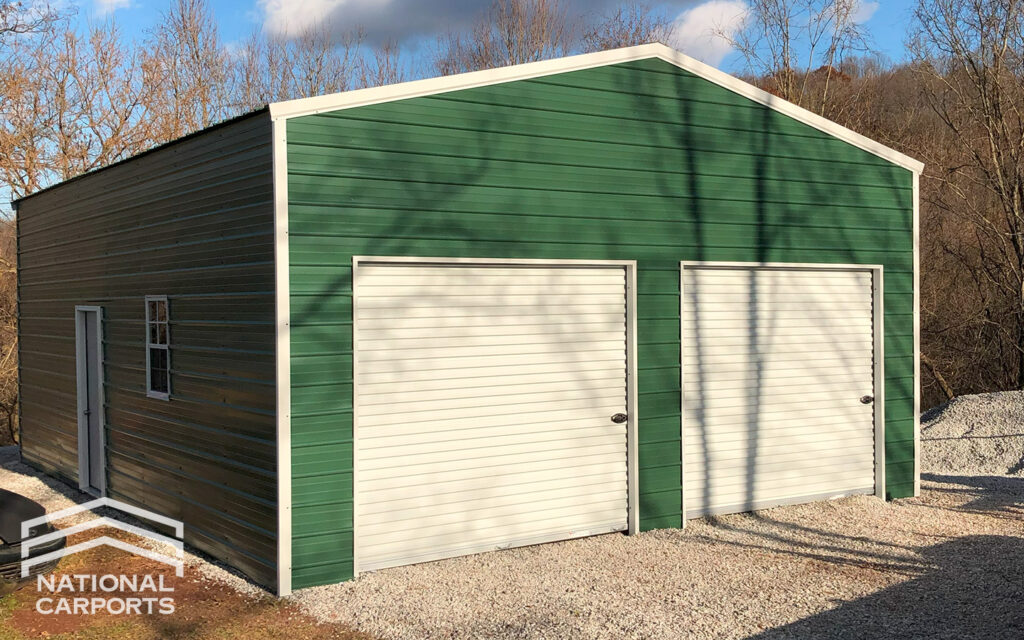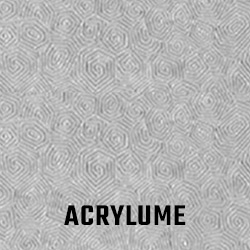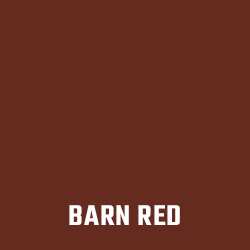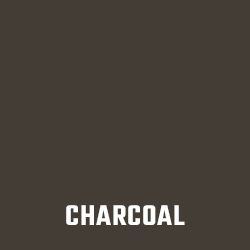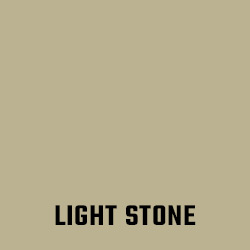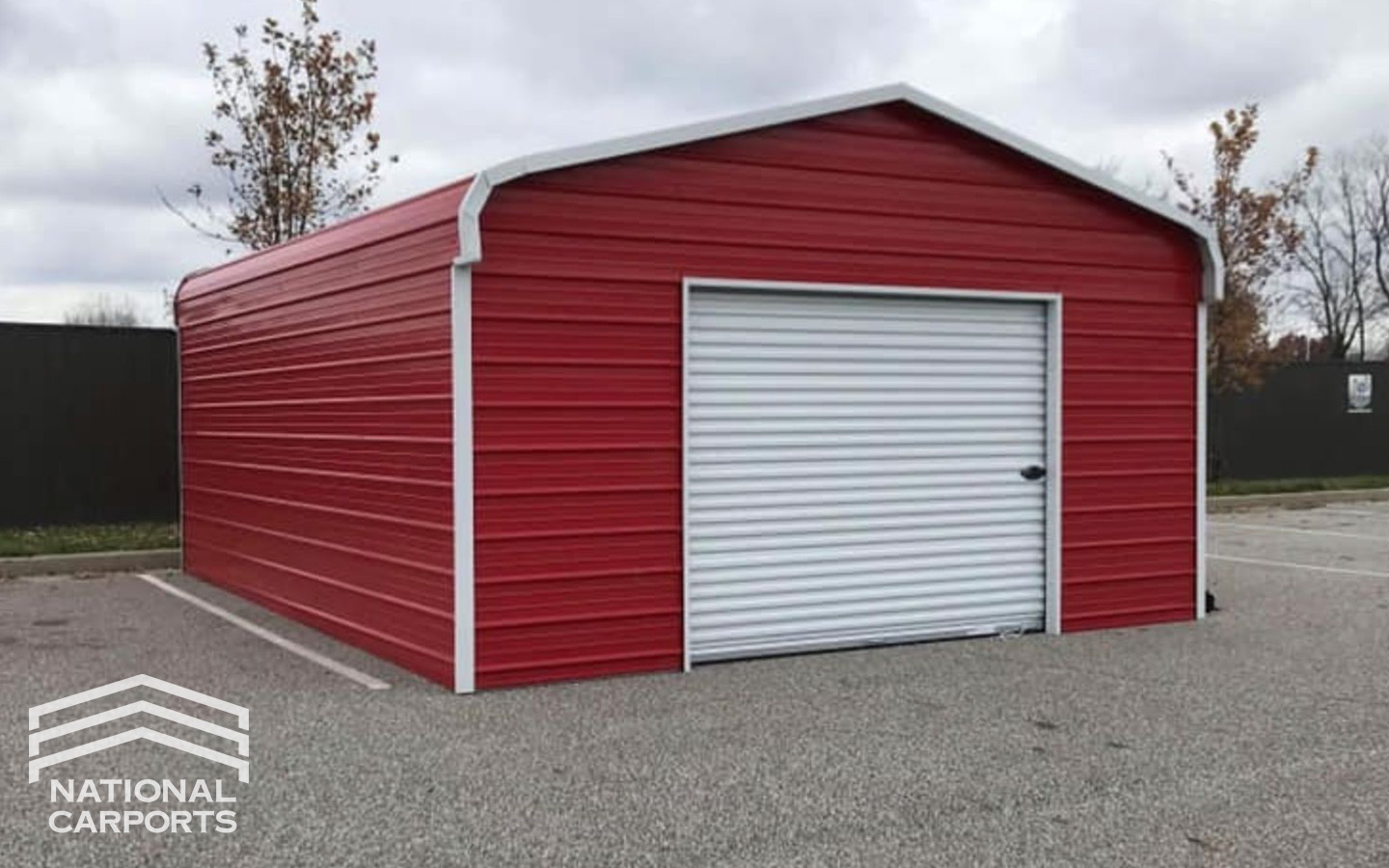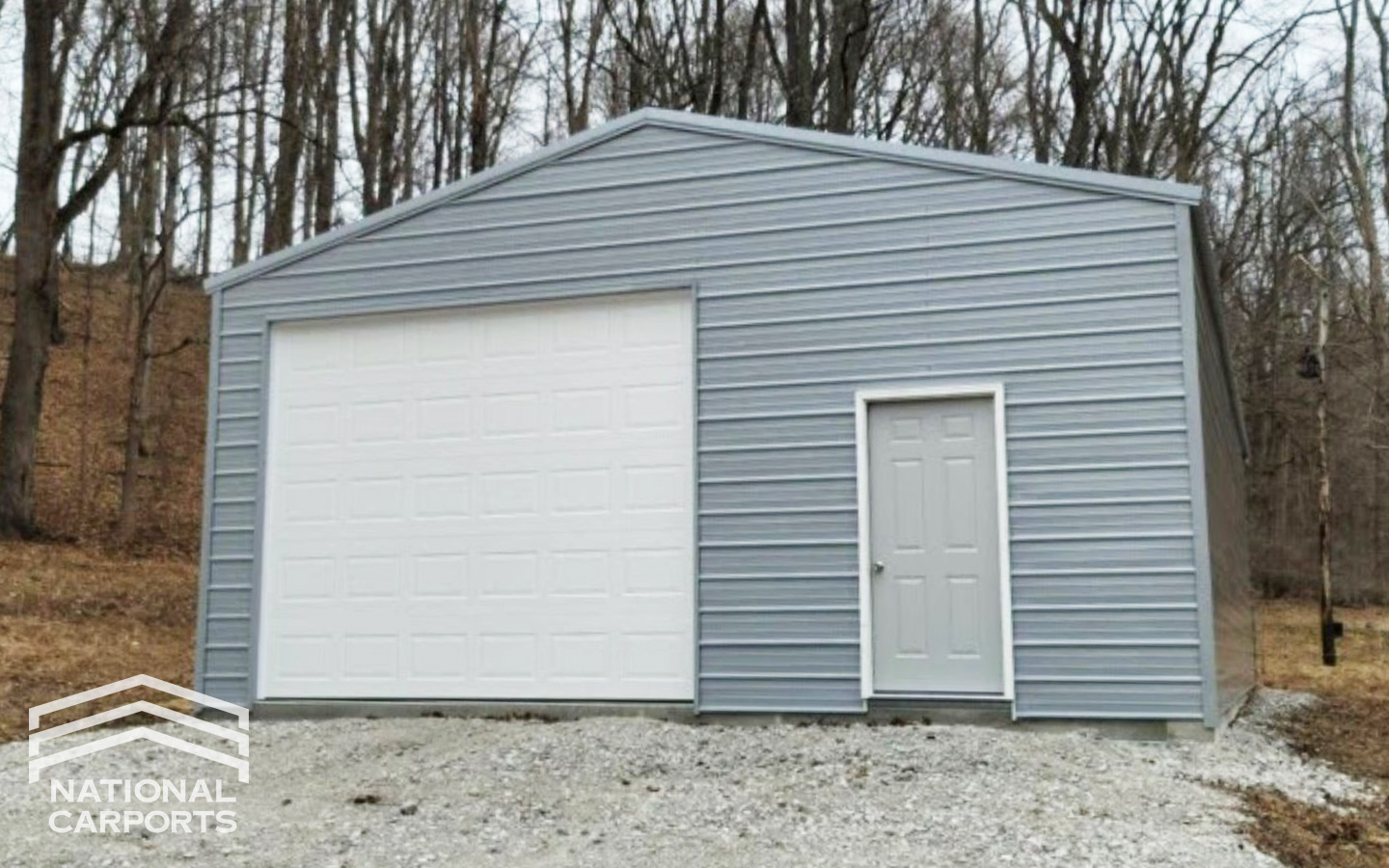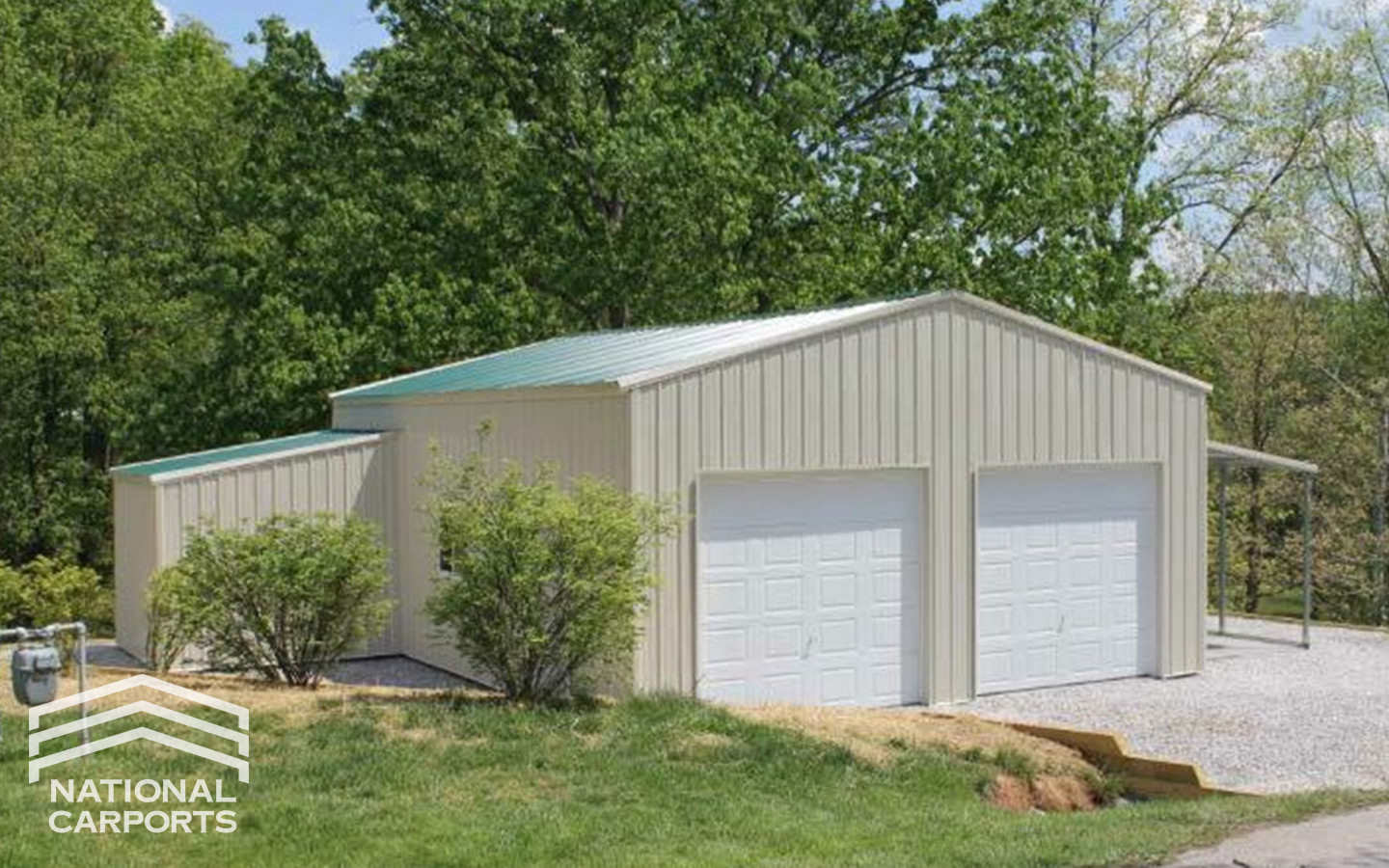26×21 Garage with Two Doors
- 100% certified for snow and wind loads
- 29 gauge metal roofing and sidewall panel, covered by a true 40 year warranty
- 12 gauge galvanized steel tubing frame with a full 20 year warranty
- Vertical roofs and sides available
- Track garage doors available (white only)
- Insulation available
18 Different Color Options Available!
Frequently Asked Questions
Why are steel buildings so popular?
The main reason is price. The cost of steel buildings are less per square foot than any other known form of construction, and can be erected quickly, offering its owners faster access to their new building. Since steel is 100% recyclable, steel buildings have become one of the greenest construction methods available on the market today. Steel buildings construction have also been able to reduce its environmental impact in a variety of ways: (1) Raw Materials; (2) Design; (3) Construction; (4) Maintenance; and, (5) Disposal. Other important factors are its strength, mobility, flexibility, functionality and portability.
What are the warranties on your buildings?
We construct each building using a full 29 gauge metal roofing and sidewall panel, covered by a true 40 year warranty. The frame of each building is constructed of 12 gauge Galvanized Steel Tubing, which is 33% stronger than conventional tubing. The tubing is covered with a full 20 year warranty.
Are your buildings local and state certified?
Each building has been Certified to meet and exceed snow and wind load requirements set by the local and state codes.
What Garage Door Options are available?
We install standard roll-up doors and offer sectional track doors (in white only).
How long does it take to complete a garage/carport?
Generally 1 day for carport installs and 1-3 days for garages.
What do i need to do before purchasing a new carport/garage?
- Mark any utility lines running underneath planned installation sites. If you do not know the exact location of any water, gas, or electric lines please call 811 to have them come out and mark the lines free of charge.
- Prepare level lot: move earth if necessary to create a level installation service. Sites must no be more than three inches off level to avoid any cut leg fees or other additional labor/return trip fees.
- Check the location with a string level before you are scheduled for install.
- Clear any and all obstacles in and around the installation site such as cars and debris.
- Installation crews need a minimum of 36" all around the building to fasten any wall paneling, end wall framing, and trim.
- Any safety requirements must be disclosed upon purchase of unit. National Carports must be aware of any safety training or safety classes/videos our installation contractors must complete prior to installation.
- Check to see if you area requires any permits, covenants, searches or restrictions. Some areas may take up to a few days to get permits, so allow for that time when seeking a permit.
- Installation time frames may vary depending on the time of year. Please inquire at the time of order.
- Balance due will need to be given to installers on site at the time of install. We accept cash or check only. If you want to use credit/debit card, that payment proces will have a 4% charge. We accept Visa, Mastercard, and Discover only.
What type of steel tubing do you use?
Flo-Coat ® galvanized steel tubing is the original in-line galvanized product. It is manufactured using the advanced processing technique of in-line galvanizing first introduced by Allied in 1959.
Over the years the product has benefitted from continuous advances in technologies and processes. Flo-coat tubing provides advanced levels of corrosion protection, while having the ability to be painted or powder coated for aesthetic purposes with little advance preparation. In addition to its longevity, Allied’s cold forming process delivers higher strength levels than other competitive products. The product typically carries a minimum 50ksi yield and 55ksi tensile strength.
What type of insulation is available?
We offer both R19 Batt insulation and R9 Double Bubble insulation.
Is it a leak or condensation?
Condensation in steel buildings is often mistaken for leakage from roofing failure. Although condensation can lead to premature deterioration of your steel buildings, it can be safely and easily solved by increasing circulation and ventilation. Windows, doors and roof vents are necessary to controlling condensation and should be considered when ready to purchase your new steel building. Fans and dehumidifiers as well as proper insulation and moisture barriers may also be considered.
Heat Transfer
Effectively controlling temperature in a steel building requires insulation to be present along exterior walls and roof. When a temperature differential is present in an enclosed steel building, heat will work from warmer areas to colder areas until the temperature in the building has stabilized. At the point of thermal stabilization, the cooler (and heavier) air will be present at lower elevations and warmer air will be present at the roofline. The function of insulation is to help stabilize air temperature at more desirable levels. When it is hot outside, preventing heat from transferring into the building is the goal, and of course in the winter we want heat to remain inside.
Heat transfer in steel structures occurs in two ways:
Convection : Occurs with the physical movement of air. There are two types of convectional heat movement. The first is natural, where hot air rises displacing the cold air and moving it down. The second type is forced or mechanical convection. This occurs when an object, like a fan, physically moves or “forces” the air to move. Convection can be solved by supplying efficient ventilation such as roof vents, windows and doors.
Radiation : Occurs when an object is warmer or hotter than the air around it. For example, the sun, which is hotter than everything around it, radiates heat waves that travel through the air and is either absorbed by or reflected by the surface it comes in contact with. Radiation is normally controlled with some form of insulation material.

